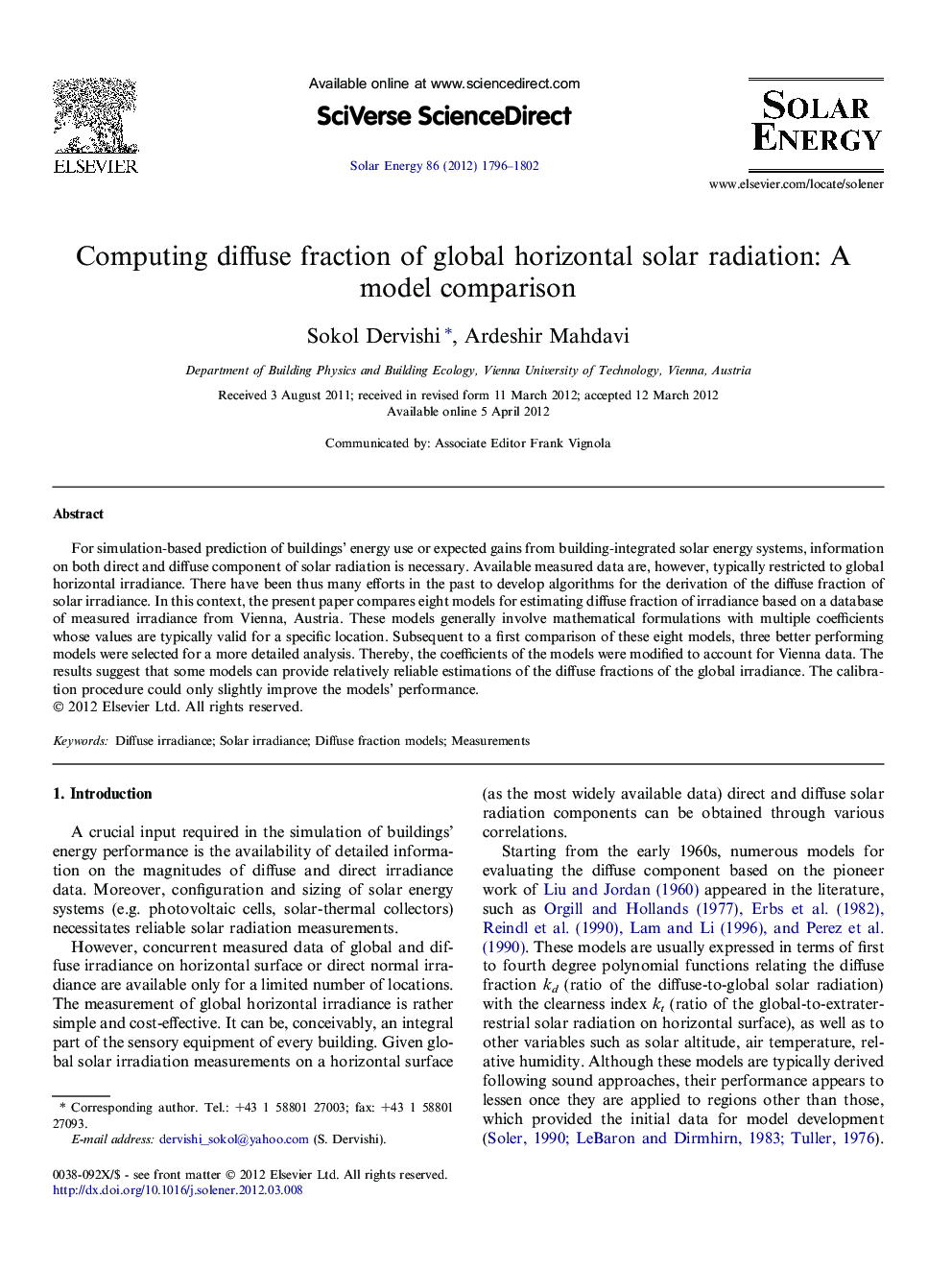| Article ID | Journal | Published Year | Pages | File Type |
|---|---|---|---|---|
| 1550840 | Solar Energy | 2012 | 7 Pages |
For simulation-based prediction of buildings’ energy use or expected gains from building-integrated solar energy systems, information on both direct and diffuse component of solar radiation is necessary. Available measured data are, however, typically restricted to global horizontal irradiance. There have been thus many efforts in the past to develop algorithms for the derivation of the diffuse fraction of solar irradiance. In this context, the present paper compares eight models for estimating diffuse fraction of irradiance based on a database of measured irradiance from Vienna, Austria. These models generally involve mathematical formulations with multiple coefficients whose values are typically valid for a specific location. Subsequent to a first comparison of these eight models, three better performing models were selected for a more detailed analysis. Thereby, the coefficients of the models were modified to account for Vienna data. The results suggest that some models can provide relatively reliable estimations of the diffuse fractions of the global irradiance. The calibration procedure could only slightly improve the models’ performance.
► Comparison of eight different models for estimating diffuse fraction of irradiance. ► Three better performing models selected for a more detailed analysis. ► The coefficients of the models modified to account for Vienna data. ► Some models provide relatively reliable estimations of the diffuse fractions. ► Calibration procedure only slightly improvement of the models’ performance.
